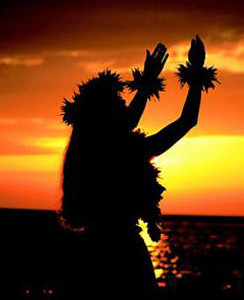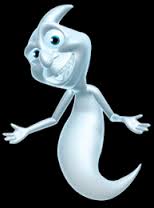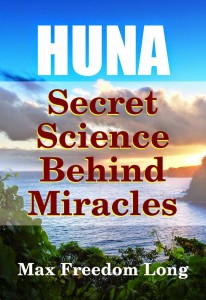“Here’s to the profound religious experience that comes from doing a job well and being grossly underpaid”—Larry Mann
 Kahuna, the plural of which is actually kahuna, is a generic term in Hawaiian for someone who is an expert in one or more of many types of crafts or professions. For our purposes, we’ll just be using it to refer to Hawaiian sorcerers, which is how the word is usually interpreted by us haoles. Much of what we know about them comes from Max Freedom Long, a teacher from California who moved to Hawaii in 1917 while in his late 20s and became interested in the local variety of shamanism. Various scholars and cultural historians have done their best to discredit his work, but their criticisms basically boil down to their claims that no one can prove that any of his stories are true. That’s basically the same thing that the skeptics say about anyone who makes claims that they don’t like, and Native Hawaiians who dismiss his findings may have ulterior motives for doing so. However, it is fair to say that his own metaphysical system/philosophy, called Huna, while based on what he learned of Hawaiian esoteric practices, is not true kahuna magic. As far as I can tell, no kahuna sorcerer ever took Long under his wing and taught him any of their secrets. They are very suspicious of whites, and for good reason. We didn’t treat the Polynesians much better than the Native Americans. Hence the aforementioned possible ulterior motives. Long may have learned and revealed more than they’re comfortable with outsiders knowing, and now they’re trying to cover their tracks.
Kahuna, the plural of which is actually kahuna, is a generic term in Hawaiian for someone who is an expert in one or more of many types of crafts or professions. For our purposes, we’ll just be using it to refer to Hawaiian sorcerers, which is how the word is usually interpreted by us haoles. Much of what we know about them comes from Max Freedom Long, a teacher from California who moved to Hawaii in 1917 while in his late 20s and became interested in the local variety of shamanism. Various scholars and cultural historians have done their best to discredit his work, but their criticisms basically boil down to their claims that no one can prove that any of his stories are true. That’s basically the same thing that the skeptics say about anyone who makes claims that they don’t like, and Native Hawaiians who dismiss his findings may have ulterior motives for doing so. However, it is fair to say that his own metaphysical system/philosophy, called Huna, while based on what he learned of Hawaiian esoteric practices, is not true kahuna magic. As far as I can tell, no kahuna sorcerer ever took Long under his wing and taught him any of their secrets. They are very suspicious of whites, and for good reason. We didn’t treat the Polynesians much better than the Native Americans. Hence the aforementioned possible ulterior motives. Long may have learned and revealed more than they’re comfortable with outsiders knowing, and now they’re trying to cover their tracks.
Long’s interest in the kahuna seems to have been piqued when he heard a story about a minister who had challenged one of them to some sort of prayer contest. The kahuna told the man that he would pray his congregation to death, and Long claims to have seen the minister’s journal in which he recorded multiple members of his church dying within a short time. (Sounds like this wasn’t just a friendly wager.) According to his diary, the minister somehow managed to convince someone to teach him the death prayer, which he then directed at his opponent. The kahuna died a few days later, and the minister left his church and set up his own chapel, although the exact nature of his new faith isn’t elaborated on.
Soon after discovering this story, Long met the curator of the Bishop Museum, Dr. William Brigham,* who Long says had been studying the kahuna for years (others dispute this, or at least his character). According to Long, Brigham told him his own story of a brush with a kahuna that turned deadly. Brigham had hired a group of Hawaiian men to climb a mountain for some reason. The party included a 15-year-old boy from a village whose kahuna had placed some sort of standing death prayer on any resident who went to work for a white man. During the climb, the boy’s feet became numb, and the numbness quickly spread – a sure sign that he was under the influence of the curse. According to Brigham, the men considered him to be a powerful sorcerer as well, and they begged him to try to redirect the spell back at the kahuna. He reluctantly agreed, and while standing over the boy, he began praising and flattering the low spirits thought to have been enlisted by the kahuna to carry out the death sentence. He told them that the boy was innocent and that it was the kahuna who had sent them who deserved to be punished. He then spent the next hour meditating with this thought in mind until the boy suddenly started to get better. The numbness quickly subsided, and soon the boy was fine.†
A few days later, Brigham accompanied the boy to his village to see if his redirection of the death prayer had worked. By Long’s account, the people hid from him in fear, because on the night that Brigham had counteracted the curse, the kahuna had emerged from his hut and announced that a white magician had sent the death prayer back to him. Thinking that he was in no danger, the kahuna had failed to take precautions against such an eventuality, and he told the villagers that he was now doomed. By the next morning, he was dead.
According to Long, these low spirits who are under the control of the kahuna kill by draining the vital forces from their victim, which he says explains their numbing effect. Having absorbed all of this energy, they are then ordered by the kahuna to disperse it by “playing,” the description of which sounds a lot like what we would usually describe as poltergeist activity. But as we have seen in other cases, poltergeists rarely harm anyone beyond a superficial level, either because they lack the desire or the ability. If these same sorts of spirits are responsible for carrying out the execution of the death prayer, then there must be something about the power of the kahuna that either empowers or compels them to inflict lethal damage on the victim. If the previous story is true, I’m inclined to think that they are somehow compelled, based on the fact that, for whatever  reason, these spirits were able to be redirected back to the source of their deadly mission, and they didn’t seem to have a problem turning on the one who had sent them in the first place. It seems less likely that they would so easily turn on one who had somehow empowered them. Also, as we saw in the cases of the Black Monk and the Bell Witch, these spirits do sometimes display a sort of affection, or at least a fondness for their “victims” (the possibility that the Bell Witch may have poisoned one of them notwithstanding; the “witch” always made it clear that she hated that guy) even if they do play a little rough at times. The logical conclusion would seem to be that the homicidal impetus comes from the kahuna. After all, they are the ones who want the person dead, not the spirits.
reason, these spirits were able to be redirected back to the source of their deadly mission, and they didn’t seem to have a problem turning on the one who had sent them in the first place. It seems less likely that they would so easily turn on one who had somehow empowered them. Also, as we saw in the cases of the Black Monk and the Bell Witch, these spirits do sometimes display a sort of affection, or at least a fondness for their “victims” (the possibility that the Bell Witch may have poisoned one of them notwithstanding; the “witch” always made it clear that she hated that guy) even if they do play a little rough at times. The logical conclusion would seem to be that the homicidal impetus comes from the kahuna. After all, they are the ones who want the person dead, not the spirits.
Long claims that the kahuna believe that everyone is made up of three parts: the higher, lower and middle self. The lower, or subconscious self, manages the vital forces in our bodies and plays a key role in healing and maintaining health, but it has the temperament of a spoiled child. The middle self is what we would usually refer to as the ego, or simply ourselves – or at least the only self that we’re aware of. Anyone even slightly acquainted with Freudian theory will recognize these as corresponding to what he termed the id and the ego, but the higher self has little in common with the superego. It functions more like a guardian angel, except that it seems to take orders from the middle self. Unfortunately, since the middle self is unaware of the existence of these other two parts, the requests that it sends are usually unfocused and ambiguous. Imagine having a secret, well-meaning genie that tries to grant your wishes by reading your mind, and what you want is based on whatever mood you happen to be in at the time. The key to getting what you really want, according to Long, is enlisting the cooperation of the temperamental lower self, but how you go about doing that would be a whole separate article unto itself.
Before we move on, it is absolutely worth pointing out that both the renowned British occultist Dion Fortune and a kahuna that Long consulted concerning his failing business both gave identical accounts concerning the higher self: that it is capable of delivering to us anything that we desire, but the conscious self continuously bombards it with so many contradictory messages that it doesn’t know what we want. And they aren’t the only ones saying this. Other sources tell much the same story. We are such finicky little creatures whose whims change with the wind that we shouldn’t be too surprised when our prayers go unanswered, or are answered in weird and possibly unwanted ways.
Getting back to these low spirits, they are said by Long to be the result of our three “selves” somehow becoming separated at death. The low self, which can be pressed into service by those who know how, has little intelligence but does retain its memory. The middle self is said to lose all memory and becomes a sort of spiritual automaton, which does sound like the ghosts that are seen to perform the same routine day after day for years.
This possibility supports what Colin Wilson, Guy Playfair and a handful of other paranormal investigators believe: that poltergeists are not cases of unconscious psychokinesis as the standard parapsychology company line maintains. However, it contradicts one of the findings of Wilson Van Dusen’s research into the low spirits that he came to believe tormented so many of his patients, namely that they maintain their memories. Van Dusen would agree that these spirits possess little intelligence, but he found that they had no knowledge or memory at all of who or what they were and would readily accept any identity that he suggested.
As I mentioned earlier, there are many who are adamant about Long’s Huna philosophy having no connection to true Hawaiian spiritual beliefs, and maybe they’re right. These people will, I’m sure, take offense at some of the things that I have written here concerning the kahuna, but I place the blame for this squarely at their feet. While they are quick to criticize Huna for what it is not, they offer no examples or explanations for how or why this is so, other than saying that Long took some Hawaiian terms and changed their meanings. In fact, they strike me as falling into the category of those who doth protest too much. In short, they give off lots of heat but very little light.
 As far as the efficacy of Long’s Huna system is concerned, I don’t really know enough about it to either endorse or condemn. He may have tried to be the L. Ron Hubbard of the Hawaiian version of the OTO, but if so, he was nowhere near as successful at it. (If you have no idea what this reference is alluding to, see Jack Parsons and L. Ron Hubbard Destroy the World.) It is undeniably true that Huna has definitely been “New Aged” by some of its ranking members over the last several decades since Long’s death in 1971. If it was never truly Hawaiian to begin with, it’s even less so today.
As far as the efficacy of Long’s Huna system is concerned, I don’t really know enough about it to either endorse or condemn. He may have tried to be the L. Ron Hubbard of the Hawaiian version of the OTO, but if so, he was nowhere near as successful at it. (If you have no idea what this reference is alluding to, see Jack Parsons and L. Ron Hubbard Destroy the World.) It is undeniably true that Huna has definitely been “New Aged” by some of its ranking members over the last several decades since Long’s death in 1971. If it was never truly Hawaiian to begin with, it’s even less so today.
_________________________________________________________________________
*The Bishop Museum is designated as the Hawaii State Museum of Natural and Cultural History. It has since been asserted by Long’s detractors that Brigham was a racist who thought very little of the Hawaiian people. Maybe this is true, but if it is, then how did Brigham get the job as curator of this museum, and why would he have wanted it? I wouldn’t want to be curator of the Museum of Skeptics, Rationalism and Hardcore Materialists.
†I think it’s also worth noting that Long did not say that Brigham saved the boy by praying to God or Jesus. If this is true, then he must have had at least some regard for the local beliefs.


